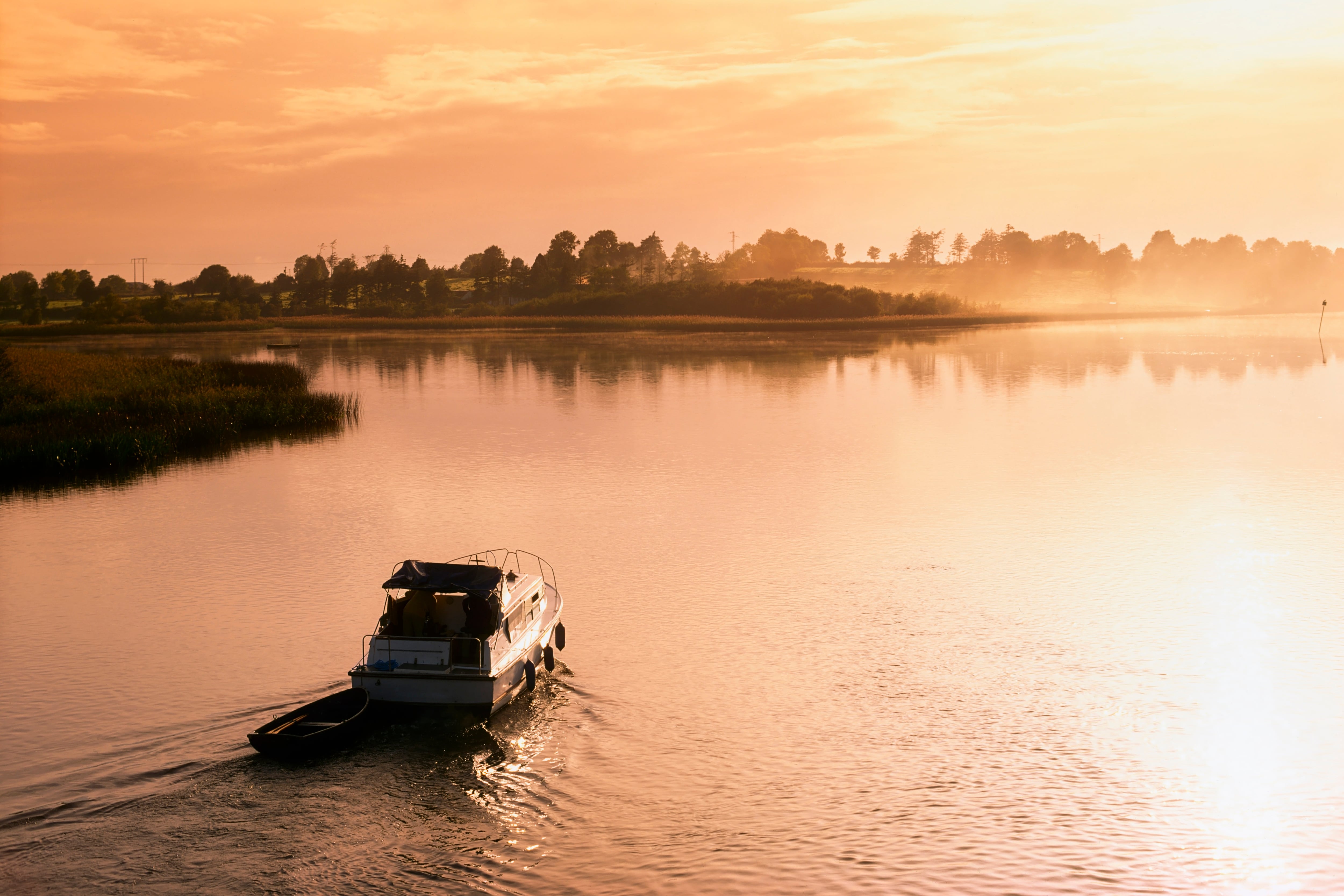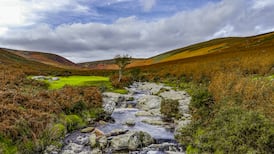At 7.45am on a Sunday, orange-gold crepuscular rays spilled across Dublin Bay, lighting the thin ribbon-like strands of saltwater left behind by the retreating tide. The ebbing waters opened up a wide, empty expanse, so I turned my back on the growing hum of weekend traffic and walked eastwards across the wave-sculpted ridges and troughs of the sand, as if destined for Howth.
Golden plovers have been on my mind ever since I stopped by to meet Frank Power, a farmer and retired butcher in Clarecastle, just south of Ennis in Co Clare, earlier in the week. For the past 15 years he has kept a meticulous journal of life on his 50-acre farm roughly 20 miles outside Limerick, where he raises cattle. His first entry, dated November 21st, 2010, notes 146 plovers were on his fields that day. In winter these birds are drawn to lowland farmland, where they forage for beetles, grass, worms, snails, berries and spiders.
Any bird with “golden” in its name gets my attention, but when the summer breeding season ends, golden plovers trade their strikingly high-contrast, gold-speckled black plumage for feathers with a subtler, more muted, buttery tone. They don’t go drab or dingy – merely tarnished, as if a gentle polish is all that would be needed to restore the hidden yellow-gold back to life.
On the sand I walked towards a scattered assemblage of birds, hoping they wouldn’t lift. Ahead, a small flock of plovers stood evenly spaced across the sand, all facing the same direction; a few bounced on a single dark grey leg while the other leg was tucked away into their feathers. Scattered around them were winter visitors from different corners of the world: Brent geese from Arctic Canada; handfuls of impeccably groomed, orange-red-beaked oystercatchers that had arrived from Scandinavia, the Faroe Islands and Scotland; and bar-tailed godwits – in Irish, guilbneach stríocearrach, “the bird with a pointed, sharp bill” – which had flown nonstop thousands of kilometres from Siberia. It felt like the bustling lounge of an international airport, except these passengers aren’t going anywhere soon. Here in the bay, they will stay well into next year, feeding and fattening before their spring departure.
READ MORE
Over the past six weeks or so, golden plovers have begun arriving from Iceland, which is home to a third of the world’s breeding population. Iceland offers plovers a set of conditions that are hard to find elsewhere in the North Atlantic region: a relatively sparse human population, vast and sweeping expanses of sparsely vegetated upland landscapes, and a low number of mammalian predators that could threaten and raid their ground-scraped, grass and lichen-lined camouflaged nests. Plover chicks feed on worms, beetles and larvae, and Iceland’s exceptionally long summer daylight – with sunrise around 3am and sunset close to midnight – gives them plenty of time to forage. By autumn, tens of thousands of them take to the sky and make their way southwards to Ireland for the winter months.
[ There’s nothing inevitable about extinction. It’s possible to reverse our way outOpens in new window ]
Their arrival in Iceland each march is symbolic, marking the turning of the season from winter to longer, warmer days. In Lóan er komin, a 19th-century poem by Páll Ólafsson, the golden plover’s arrival is a sign of renewal and time to shake off lethargy for the spring and summer ahead: “The golden plover has arrived to sing away the snow / To sing away the misery, that she can do / She has told me the whimbrel will arrive soon / sunshine in the valley and blossoming meadows / She has told me of my sins / That I sleep too much and don’t do any work / She has told me to get up and work / and full of hope, welcome the summer.”
Iceland serves as the most critical global breeding ground for golden plovers, replenishing populations across the North Atlantic. The island plays a similar role as the source of yearly recruits for other species, including whimbrels, redshanks, meadow pipits and black-tailed godwits, all of which raise their young on Icelandic soil each summer. About 1.5 million pairs of these species breed in Iceland each summer, yielding roughly four million adult and juvenile birds that migrate in the autumn.
[ Raucous jays are the lovable gangsters of Ireland’s woodlandsOpens in new window ]
These populations are under mounting pressure. Expanding infrastructure – particularly the development of summer houses in the Icelandic lowlands, additional roads and power lines, as well as the expansion of forestry and intensification of farming, and a growing human population – is taking a toll. In southern Iceland, the golden plover population has declined by 6 per cent per year over the past 14 years.
Not every plover leaves Ireland in the spring. A few will stay and try to breed locally, but over the past 50 years, their numbers have dwindled to a few isolated strongholds on blanket bogs in the northwest uplands. Last year, however, a publicly funded €25 million project was launched to turn the tide for these birds and other vulnerable species, such as curlews and lapwings. It offers a reason for hope.















